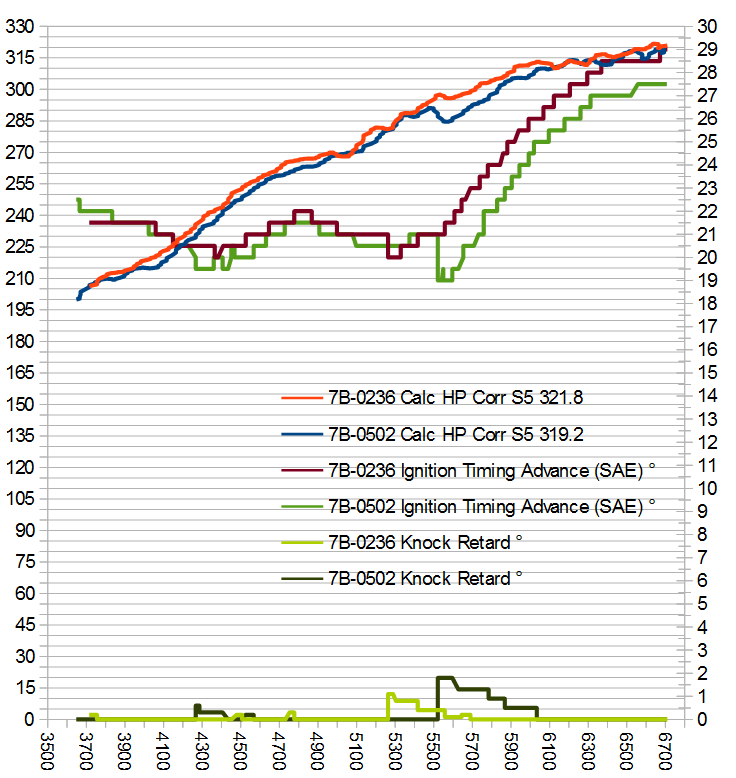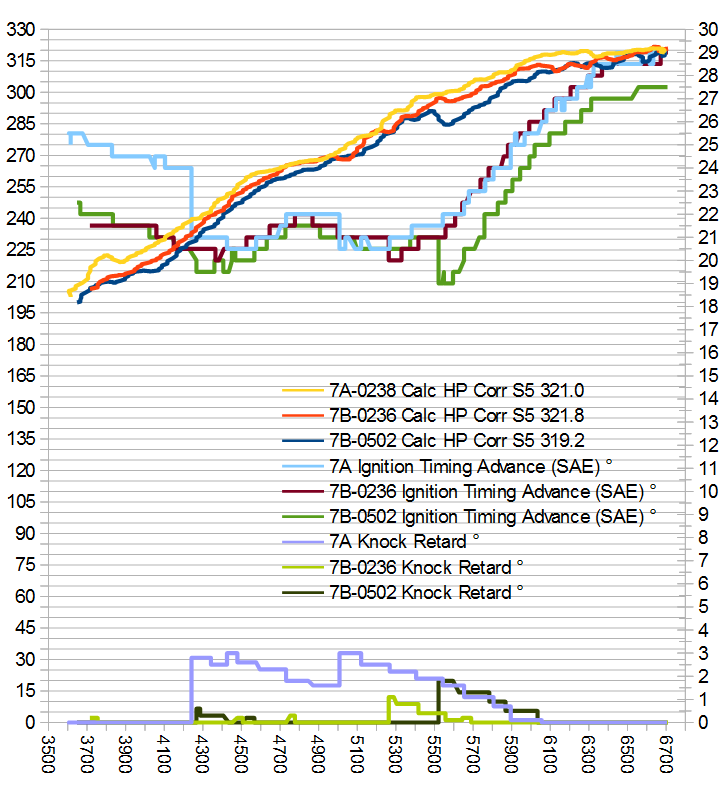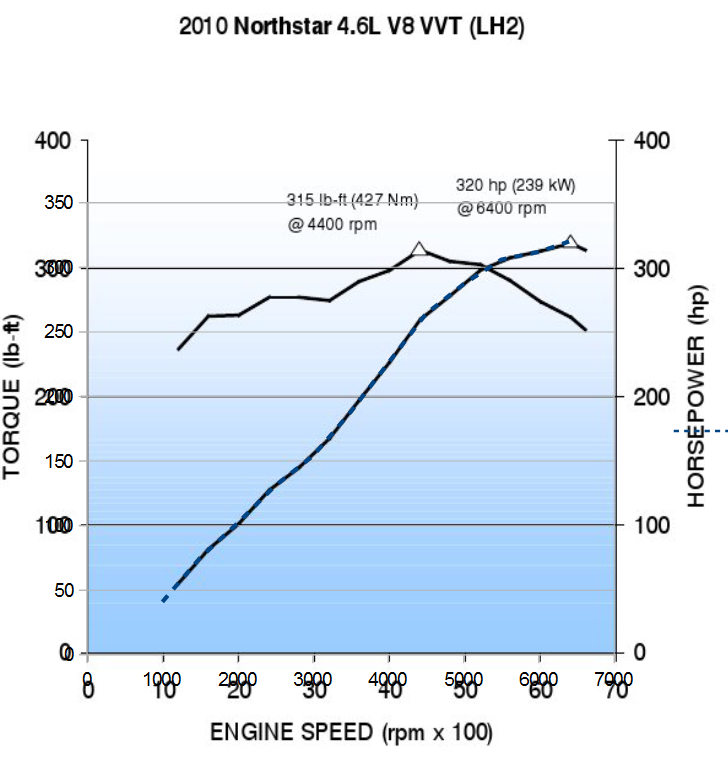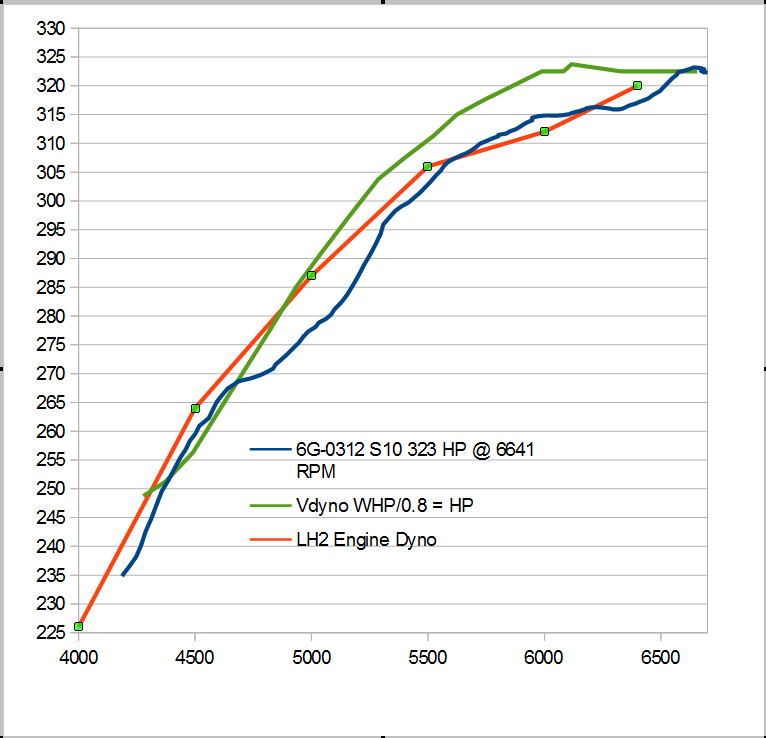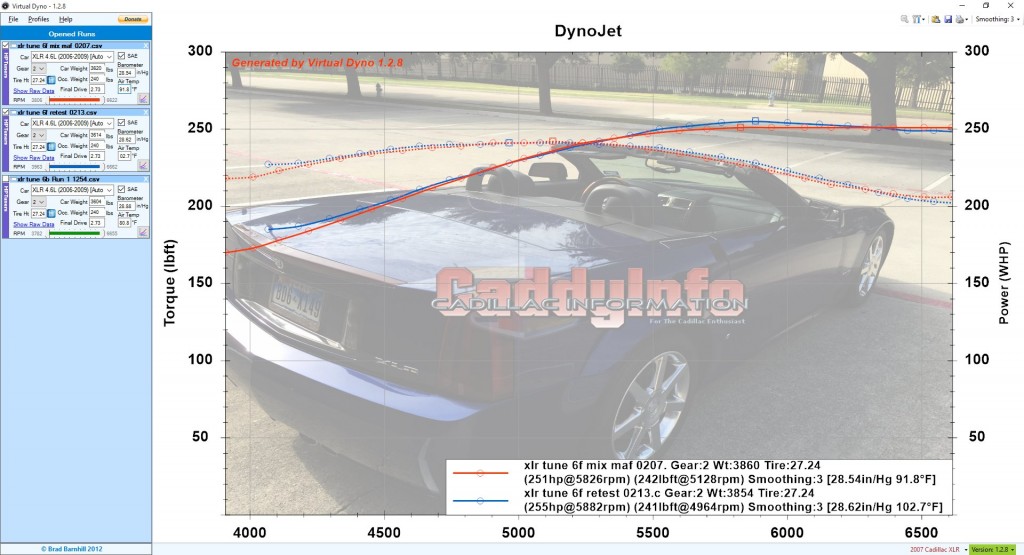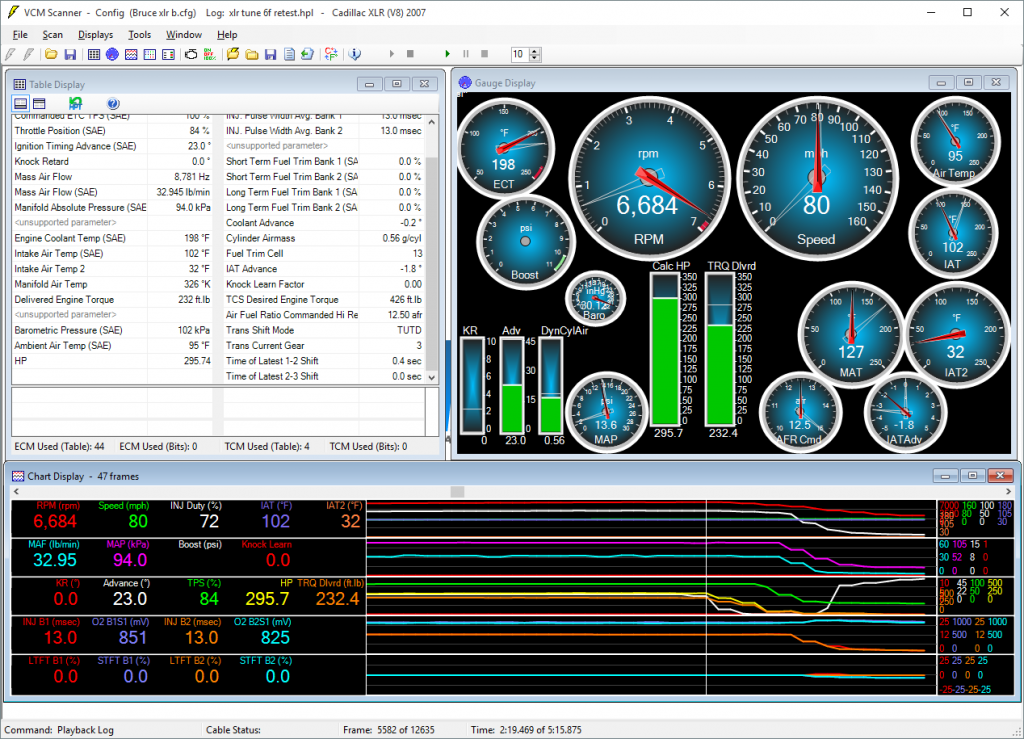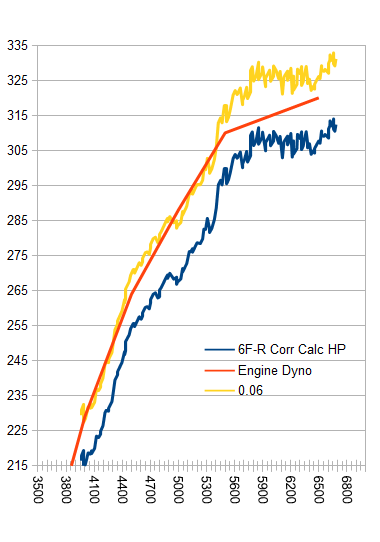I am glad that I am running 2 tests on every setting now, as I am seeing some variability.
[Click to zoom images, back to return]
Tune 7B reduced the timing low, included some knock reserve where we were seeing KR, kept the timing high, and put piston protection back to 8192 instead of 6000 rpm.
Both the runs on the graph are tune 7B same day, same roadway, so same conditions. The graph shows calculated HP at the top, degrees of advance in the middle, and degrees of KR at the bottom. What happens is the 2nd run gets a knock event around 5500 rpm and loses 2 points of advance that it never seems to recover.
Throw in 7A as well, which had all the advance and a lot of KR, and you can see that 7B-0236 basically emulates 7A but via timing table not knock retard.
I am focusing on the calc HP/torque and not the Virtual Dyno for now, but the Virtual Dyno loved these tunes — except it shows some huge variability it could not smooth out.
Weather Calc for 7B: https://wahiduddin.net/calc/calc_hp_dp.htm
I hope to gather more sample data for Tune 7B next.

